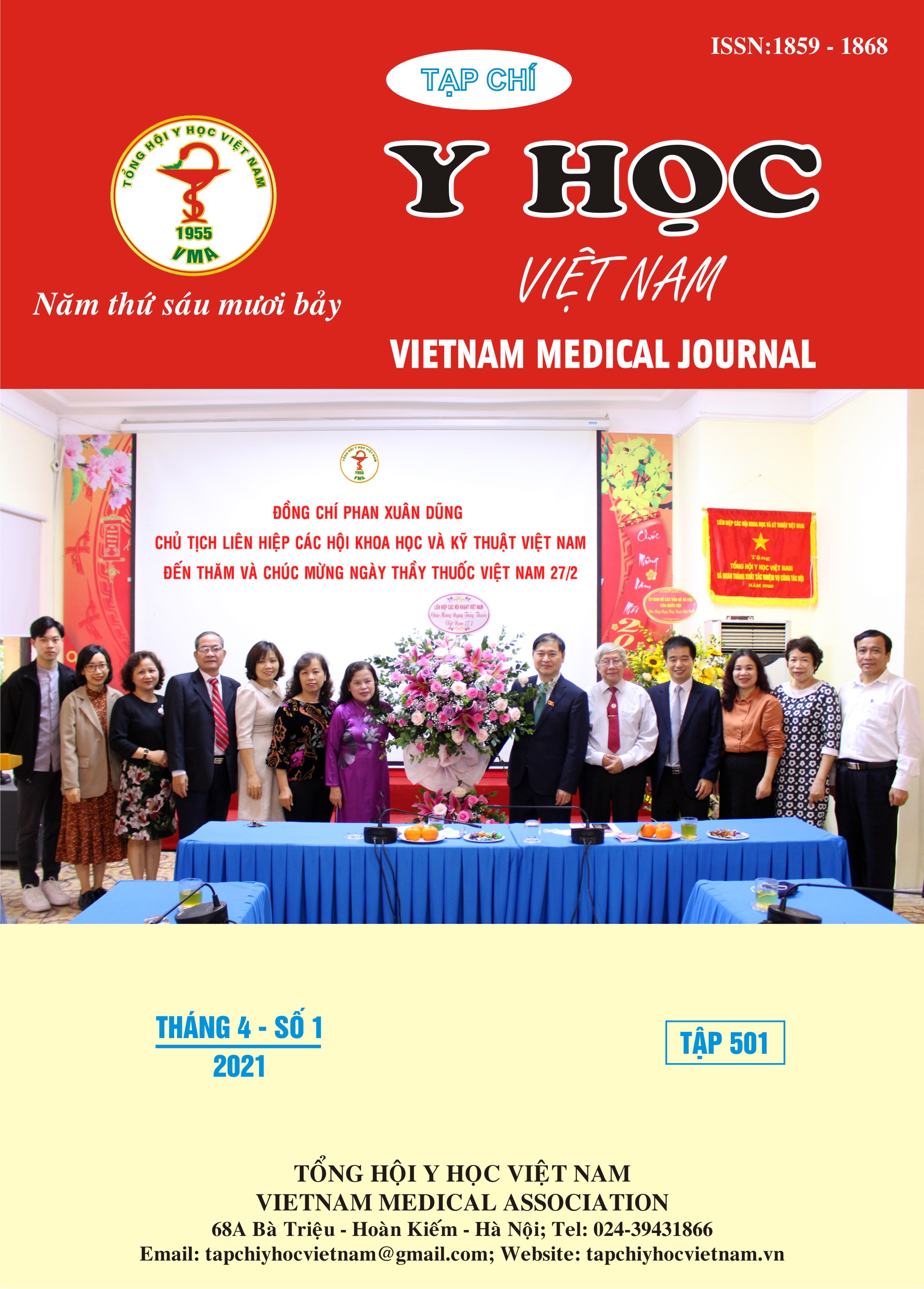NGHIÊN CỨU ĐẶC ĐIỂM LÂM SÀNG CỦA RỐI LOẠN LO ÂU LAN TỎA
Nội dung chính của bài viết
Tóm tắt
Mục tiêu: nghiên cứu đặc điểm lâm sàng rối loạn lo âu lan toả bằng thang điểm HAM-A. Đối tượng và phương pháp nghiên cứu: 62 bệnh nhân rối loạn lo âu lan toả được điều trị nội trú tại Khoa Tâm thần, Bệnh viện Quân y 103. Kết quả: bệnh nhân tái phát lần hai chiếm tỷ lệ cao 59,68% và có tới 56,46% bệnh nhân khám không đúng chuyên nhành. Các triệu chứng khởi phát thường gặp của bệnh nhân là triệu chứng hồi hộp (95,16%) và thời gian mang bệnh là 15,38 ± 9,85 tháng. Phần lớn chủ đề lo âu về bệnh tật (82,26%), thời gian tồn tại của triệu chứng trung bình 19,35 ± 11,26 phút. Ngoài ra triệu chứng tâm thần thường gặp nhất là triệu chứng chóng mặt (83,87%) và điểm HAM-A cho nặng chiếm tỉ lệ cao nhất với 53,22%. Kết luận: Lâm sàng rối loạn lo âu lan toả rất đa dạng và phong phú.
Chi tiết bài viết
Từ khóa
Rối loạn lo âu lan tỏa, thang điểm HAM-A
Tài liệu tham khảo
2. Gonçalves D.C., Pachana N.A. and Byrne G.J. (2011), Prevalence and correlates of generalized anxiety disorder among older adults in the Australian National Survey of Mental Health and Well-Being”, Psychological Medicine; 32, 649-659.
3. Kroenke K., Spitzer R.L., Williams J.B. et al. (2007), “Anxiety disorders in primary care: prevalence, impairment, comorbidity, and detection”, Annals of Internal Medicine; 146, 317-325.
4. Montgomery O., Follen M. and Urdaneta-Hartmann S. (2012), “The 2010 annual sex and gender research forum at drexel university and drexel university college of medicine: an institute for women's health and leadership initiative. Introduction”, Gend Med; 9(1 Suppl): 1-6.
5. Trần Nguyễn Ngọc (2018), “Đánh giá hiệu quả điều trị rối loạn lo âu lan tỏa bằng liệu pháp thư giãn-luyện tập”, Luận án tiến sỹ; Đại học y Hà Nội.
6. Crocq M.A. (2017), “The history of generalized anxiety disorder as a diagnostic category”, Dialogues Clin Neurosci; 19(2): 107-116.
7. Gordon B.R., McDowell C.P., Lyons M. et al. (2017), “The effects of resistance exercise training on anxiety: A meta-analysis and meta-regression analysis of randomized controlled trials”, Sports Med; 47(12): 2521-2532.
8. Srivastava S., Menon V., Kayal S. et al. (2020), “Level of anxiety and depression and its clinical and sociodemographic determinants among the parents of children with cancer undergoing chemotherapy”, J Neurosci Rural Pract; 11(4): 530-537.


